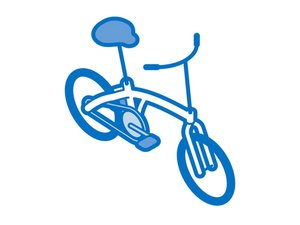Introduction
You have a wobbly rear bicycle wheel? Worry no more, you have come to the right place. If you instead have a wobbly front wheel, check out this page for more solutions to fix up your bike.
A stable and well-aligned back wheel is essential for a smooth and safe ride, and addressing any wobbling issues promptly can significantly enhance your cycling experience. This page is designed to assist cyclists of all levels in identifying, diagnosing, and resolving problems causing unwanted wobbling in their back wheels.
Causes
Improper spokes can lead to imbalances, causing a wobbly back wheel. Check and adjust spoke tension to ensure even distribution.
Use a wheel truing stand and adjust tension using a spoke wrench, ensuring even gaps and a dent-free rim. If you don't have access to a wheel truing stand, flip the bike over so the handlebars and seat rest on the ground. Then use the rim brake calipers to find gaps and gauge trueness while spinning the rear wheel. Optionally, use spoke tension meter to make sure all of the spokes are at the correct tension.
If you have missing spokes, replace them and readjust all spokes to make the rim true.

- 45 minutesDifficult

- 10 - 20 minutesEasy
A bent or broken axle can cause wobbling during rides. Remove the axle from the rear hub. If bent or broken, replace it to ensure proper balance and stability. Be attentive to difficulties in tight turns, indicating potential axle issues.
If the axle is not bent, reinstall the axle, ensuring to properly tighten it to the correct torque specs for your bike. Ensuring the axle is properly tightened when installed may fix the wheel wobble.

- 20 - 40 minutesEasy
If tightening the axle does not fix the play in the hub, you may need to replace the hub bearings. Cup-and-cone bearings, if worn, can cause the wheel to shake freely on its axis.
For press-fit cartridge bearings, consider replacing them. For other hubs, loosen the outer nut, tighten the inner nut, and secure the outer nut. Rotate the wheel to ensure smooth movement without grating or binding sensations.
Occasionally, wobbling may be caused by lopsided tire mounting on the rim. Make sure the bead of the tire is fully seated against the wall of the rim on both sides of the tire. Pumping the tyre to a higher pressure (~40 psi) should allow the bead to snap into place, eliminating the wobble. You may also massage the tire away from the rim while inflated to ensure the bead is correctly seated.
You may see side-to-side wobble when the tire is spinning. If the rim is perfectly true and the tire bead is correctly seated, you may just have a wobbly tire. This is due to manufacturer error when stamping the tire. There is no fix for this beyond replacing the tire. However, this is purely a visual defect as a tire with only minimal wobble will preform as normal.
You're seeing solutions for Bicycle. Select your model to find parts for your device.







